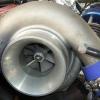What Are These Hoses? Rb20
Announcements
-
Similar Content
-
Latest Posts
-
By TurboTapin · Posted
A few random issues have popped up since my last update. My WMI pressure sensor failed within about 10 minutes of it seeing liquid. It was a 20$ China special, so I'm not surprised. My name brand replacement should arrive today. My power steering assist also decided to crap out last weekend. The usual, works for about 60 seconds after starting the car then I lose it. I dusted off my old copy of NDS and connected to the HICAS ECU. Code 4 for assist solenoid.... I tested the solenoid and it's fine. I knew the day where my HICAS ecu would crap out would come, and I welcome it. It was the last HICAS part on the car that is now in the bin. I've ordered an SSR and I will control the power steering solenoid with my Haltech ecu. It will be nice to have proper speed referenced assist again after all these years. -
By TurboTapin · Posted
Haha I just finished the last season of TPB: Jail last month. I'm happy they're still pumping out episodes. -
By TurboTapin · Posted
The picture of the underside of that PCB shows either old flux that wasn't cleaned properly or some other contaminant (I.E Water). I would flush it with ISO and try again. -
By Murray_Calavera · Posted
@silviaz Are you skim coating the entire panel (covering the entire panel with filler) before your hitting it with the long block? Or are you selectively applying filler to the repair, trying to fill the low points? Please don't do that. Almost certainly. Are you checking the panel for flatness as you go? Or is it more a case of, sand til all the guide coat is gone then check?
-





Recommended Posts
Create an account or sign in to comment
You need to be a member in order to leave a comment
Create an account
Sign up for a new account in our community. It's easy!
Register a new accountSign in
Already have an account? Sign in here.
Sign In Now